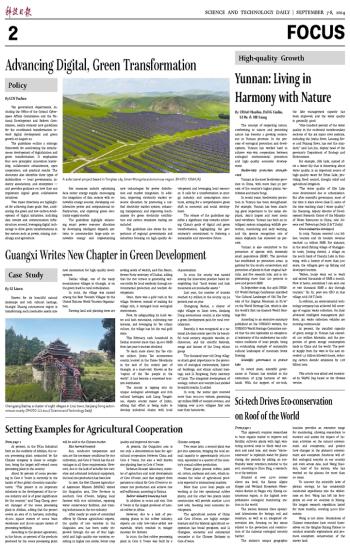
 |
| A solar panel project based in Tongliao city, Inner Mongolia autonomous region. (PHOTO: XINHUA) |
Ten government departments, including the Office of the Central Cyberspace Affairs Commission and the National Development and Reform Commission, jointly released new guidelines for the coordinated transformation toward digital development and green growth on August 24.
The guidelines outline a strategic framework for accelerating the simultaneous development of digitalization and green transformation. It emphasizes four core principles: innovation leadership, collaborative advancement, open cooperation, and practical results. The document also identifies three types of stakeholders — local governments, industry associations, and enterprises — and provides guidance on how they can implement digital-green collaborative initiatives.
Two major directions are highlighted for achieving these goals: first, accelerating the green and low-carbon development of digital industries, including data centers and communication infrastructure; second, leveraging digital technology to drive green transformations in key sectors such as power, mining, metallurgy, and agriculture.
Key measures include optimizing data center energy supply, encouraging the integration of data centers with renewable energy sources, developing collaborative power and computational infrastructure, and exploring green electricity supply models.
The guidelines highlight enhancing smart power resource allocation by developing intelligent dispatch systems to accommodate large-scale renewable energy and implementing new technologies for power distribution and market integration. In addition, improving electricity market resource allocation by promoting a unified electricity market system, enhancing transparency, and improving mechanisms for green electricity certification and carbon emissions trading are included.
The guidelines also stress the importance of regional governments and industries focusing on high-quality development and leveraging local resources. It calls for a transformation in energy, industry, and consumption structures, aiming for a comprehensive green shift in economic and social development.
The release of the guidelines signifies a significant step towards achieving China's goals of digital and green transformation, highlighting the government's commitment to fostering a sustainable and innovative future.


 Next
Next




